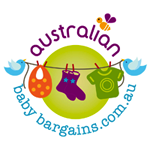
We all experience feelings of anxiety regularly – it is a normal emotion, very much related to fear.
It is often about something that might happen in the future, and may be described as a feeling of impending danger. Anxiety is actually there to protect us, so that we can respond to danger when needed. But sometimes it becomes a problem when it is persistent and severe, or interfering with our daily lives. We might experience generalised anxiety and find ourselves worrying about many things consistently, or we might experience more acute episodes of panic, with heart palpitations, breathlessness, sweating, nausea or light headedness. In fact, 14.4% of Australian adults will experience significant anxiety over one year, and 1.4-2.9% will experience recurrent panic episodes.
Let’s focus on panic, as it can involve unexpected and intense fear. When talking with a client about panic, we find out more about the panic attacks and the person’s background, and we do some tests to rule out medical causes of the symptoms. We also check whether the panic attacks are leading to disability, and in particular avoidance of doing usual activities. For example, if a person has a panic attack in the car, then they might avoid driving the car, or if they have one at the shops, they may not want to go to those shops again for fear of having another one.
It is important to find out the underlying fears in panic, as some people worry that the physical symptoms are signs of illness, or that they might pass out, or even die. Some people worry about how other people are going to react when they have a panic attack, and that they might not be supportive. The first thing that can help is information, as it can relieve fear. The individual can understand what is happening in their bodies and minds, and myths such as, “I’m going to lose it,” can be debunked. There are a range of psychological treatments that can be helpful, including working with thoughts that are not helpful, and relaxation and breathing techniques. In particular, abdominal or slow breathing is helpful.

With slow breathing, put one hand on the abdomen and the other on the chest. Be aware of the air moving in through the nose or mouth and down into the chest, then be aware of it as you breathe out. Breathe into the chest and down to the abdomen, so that both hands move as you breathe (the chest and tummy move out as you breathe in). Breathe at a gentle rate with one breath taking about 5-6 seconds, so “in, two, three, out, two, three”. Take medium breaths, rather than big or small breaths, and as you become more confident, you might like to say as you breathe out, “out, relax, let go” or “out, peace, calm”.
Remember that the panic does not define who you are, and that there are times when you have taken a stand against the panic.
Some people find carrying a written card in their purse/wallet useful, with words such as; “I know this is panic and I know what to do, breathe slowly and relax, it will pass and I will be fine.” If you need some assistance, see your GP and they may suggest that you see a psychologist or counsellor. Looking after your general lifestyle (nutrition, exercise, sleep), doing yoga or tai chi, and having regular massages or reiki can help. Plus, be less critical of yourself and focus on kind thoughts about yourself which may also assist.
There are some helpful resources, including:
- “Release Your Worries, A guide to letting go of stress and anxiety,” by C Howell and M Murphy (book and CD)
- See my website www.drcatehowell.com.au for further information on anxiety and upcoming webinar series on “Release Your Worries.”
- Centre for Clinical Interventions (www.cci.health.wa.gov.au): provides a wide variety of mental health information and resources.
- Clinical Research Unit for Anxiety and Depression (CRUfAD) http://www.crufad.org/index.php/about has a wide range of information and resources.
Click here to read what Cate has to say about Post Natal Depression.
 Dr Cate Howell OAM CSM is a medical practitioner, therapist, educator and author. She has clinics at Gilberton (moving to Myrtle Bank in December) and Goolwa, focussing on counselling, mental health and wellbeing. Cate has written two books to date; “Keeping the blues away” about depression, and “Release Your Worries” on stress and anxiety. Further information about Cate and the practices, a blog and helpful information are available on her website www.drcatehowell.com.au
Dr Cate Howell OAM CSM is a medical practitioner, therapist, educator and author. She has clinics at Gilberton (moving to Myrtle Bank in December) and Goolwa, focussing on counselling, mental health and wellbeing. Cate has written two books to date; “Keeping the blues away” about depression, and “Release Your Worries” on stress and anxiety. Further information about Cate and the practices, a blog and helpful information are available on her website www.drcatehowell.com.au







 Dr Cate Howell OAM CSM is a medical practitioner, therapist, educator and author. She has clinics at Gilberton (moving to Myrtle Bank in December) and Goolwa, focussing on counselling, mental health and wellbeing. Cate has written two books to date; “Keeping the blues away” about depression, and “Release Your Worries” on stress and anxiety. Further information about Cate and the practices, a blog and helpful information are available on her website
Dr Cate Howell OAM CSM is a medical practitioner, therapist, educator and author. She has clinics at Gilberton (moving to Myrtle Bank in December) and Goolwa, focussing on counselling, mental health and wellbeing. Cate has written two books to date; “Keeping the blues away” about depression, and “Release Your Worries” on stress and anxiety. Further information about Cate and the practices, a blog and helpful information are available on her website 



 Dr Cate Howell OAM CSM is a medical practitioner, therapist, educator and author. She has clinics at Gilberton, Belair and Goolwa, focussing on counselling, mental health and wellbeing. Cate has written two books to date; “Keeping the blues away” about depression, and “Release Your Worries” on stress and anxiety. Further information about Cate and the practices, a blog and helpful information are available on her website
Dr Cate Howell OAM CSM is a medical practitioner, therapist, educator and author. She has clinics at Gilberton, Belair and Goolwa, focussing on counselling, mental health and wellbeing. Cate has written two books to date; “Keeping the blues away” about depression, and “Release Your Worries” on stress and anxiety. Further information about Cate and the practices, a blog and helpful information are available on her website 
